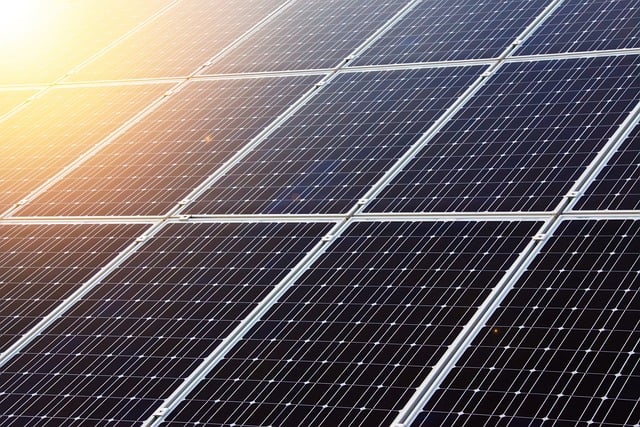Creative Ways to Integrate Sustainable Energy into Daily Life
As the world grapples with the impacts of climate change and the urgent need for sustainable energy solutions, the responsibility falls on individuals to make conscious choices that contribute to a greener planet. Integrating sustainable energy into daily life doesn’t have to be a daunting task. There are many creative approaches that not only help reduce our carbon footprint but also often lead to cost savings and an improved quality of life. This article will explore various innovative ways to incorporate sustainable energy practices into everyday routines, from personal habits to home improvements and community engagements.
Embracing Renewable Energy Sources at Home
One of the most significant changes an individual can make is switching to renewable energy sources at home. This can include solar, wind, and even geothermal energy solutions. Here are some creative strategies for implementing these technologies:
Solar Energy Solutions: Installing solar panels on your roof is one of the most effective ways to harness renewable energy. Reduce costs further by leveraging solar water heaters to heat your water supply efficiently. For those who cannot install panels due to regulations or rental circumstances, consider other options like community solar programs, where you can invest in a shared solar array.
Wind Energy: Small wind turbines can be a great addition to homes situated in windy areas. These turbines can provide supplemental energy and significantly reduce electricity bills. If installing a turbine isn’t feasible, consider purchasing wind energy credits from your utility provider to support wind energy generation in your area.
Geothermal Heating and Cooling: Utilizing the Earth’s stable underground temperature for heating and cooling can drastically reduce your energy usage. Geothermal heat pumps can be installed for residential properties, offering an efficient and sustainable heating and cooling solution without the switches and waste associated with traditional HVAC systems.
Energy-Efficient Habits and Appliances
In addition to adopting renewable energy technologies, integrating sustainable practices in daily habits can lead to significant energy savings. Here are some inventive ways to make your lifestyle more energy-efficient:
Smart Home Automation: Embracing smart technology not only enhances convenience but can also inversely affect energy usage. Smart thermostats, for instance, can learn your schedule and optimize heating and cooling settings, thus reducing energy consumption when you’re not home. Similarly, smart lighting systems that adjust based on natural light levels or occupancy can reduce electricity wastage.
Energy-Efficient Appliances: When it’s time to upgrade appliances, consider products with high energy efficiency ratings. Many manufacturers now offer washing machines, dishwashers, and refrigerators that use significantly less electricity and water than their traditional counterparts. Incentivizing your purchase through energy rebates can provide additional motivation.
Mindful Energy Consumption: Cultivating mindful habits throughout the day can dramatically impact your energy consumption. Simple actions like unplugging electronics when not in use, opting for cold water washes, and air-drying clothes instead of using a dryer contribute to lower energy usage. Creating an ‘energy challenge’ with family and friends can also foster a communal spirit of sustainability.
Green Transportation Alternatives
Transportation is a major contributor to carbon emissions, making it crucial to explore alternative methods of getting around:
Public Transportation: Utilizing public transports such as buses, trains, and subways can significantly reduce the number of individual cars on the road. Many urban centers are improving their public transportation infrastructure to encourage more sustainable travel options.
Carpooling and Ridesharing: Join or create a carpool group with coworkers, neighbors, or friends to limit vehicle usage while reducing costs. Ridesharing applications also provide a convenient way to share trips and minimize the number of cars on the road.
Electric Vehicles (EVs): If a new vehicle is on the horizon, consider investing in an electric or hybrid car. As technology progresses, these vehicles have become increasingly affordable and user-friendly, offering significant savings on fuel and maintenance while producing zero or reduced emissions. For those who already own an electric vehicle, setting up a home charging station can streamline your lifestyle and reduce reliance on gas-powered vehicles.
Bicycling and Walking: In many situations, walking or biking to nearby locations is both feasible and enjoyable. Cycling not only serves as a form of low-impact exercise but also cuts down on carbon emissions. Consider creating a local biking club to promote a community culture of active transport.
Creating a Sustainable Home Environment
Transforming your living space into a sustainable haven can be both gratifying and delightful. Here are some engaging ideas to enhance your home’s sustainability:
Grow Your Own Food: Cultivating a vegetable or herb garden can reduce dependence on store-bought produce, which often involves lengthy transportation processes. Even small spaces can accommodate container gardens or vertical gardens, allowing urban dwellers to participate in home gardening.
Utilizing Compost: Start a composting system for kitchen scraps and yard waste, which not only minimizes landfill usage but nourishes your garden at the same time. It can be an educational family activity and also encourages a more thoughtful approach to waste management.
Home Insulation Improvements: A well-insulated home maintains temperature stability, reducing reliance on heating and cooling systems. Upgrading insulation in your walls, attic, and crawl spaces can yield energy savings and enhance comfort in your home.
Water Conservation: Consider installing water-efficient fixtures such as low-flow showerheads, faucet aerators, and dual-flush toilets. Collecting rainwater through a barrel system for gardening can also help you use water mindfully.
Community Initiatives and Advocacy
Involvement in community initiatives not only supports local sustainability efforts but creates a collective impact that is more significant than individual actions:
Community Renewable Energy Projects: Investigate local co-op or community solar initiatives where many households can invest in solar energy together. Participating in such projects can drastically lower upfront costs while creating shared benefits.
Educational Workshops and Seminars: Attend or organize workshops focused on teaching practical sustainable living skills, such as canning, energy-efficient cooking, or DIY home repairs. Sharing knowledge fosters a culture of sustainability within your community.
Advocacy and Policy Influence: Engage in civic opportunities to advocate for sustainable policies. Attend town meetings or participate in campaigns that promote clean energy investments, energy efficiency incentives, and more comprehensive public transport systems.
Neighborhood Clean-Up and Planting Days: Organize or participate in local clean-up events or tree-planting projects. Improving local green spaces not only beautifies your community but enhances biodiversity and combats urban heat island effects.
Conclusion
Incorporating sustainable energy practices into daily life may seem challenging, yet it is often a matter of creativity and commitment. By embracing renewable energy solutions, fostering energy-efficient habits, and getting involved in community initiatives, individuals can play an essential role in mitigating climate change. Adopting these habits benefits not just the planet but also promotes health, savings, and an enriched quality of life. Every small action contributes to the larger goal of sustainability, and as more people join this movement, the potential for positive change becomes virtually limitless.



